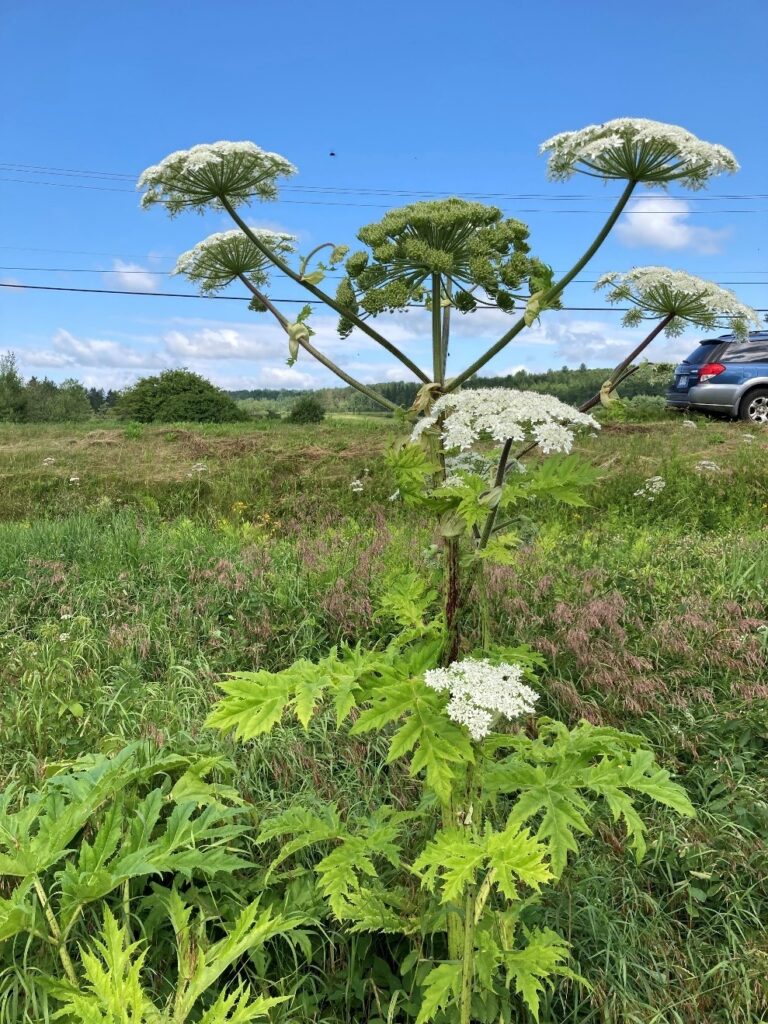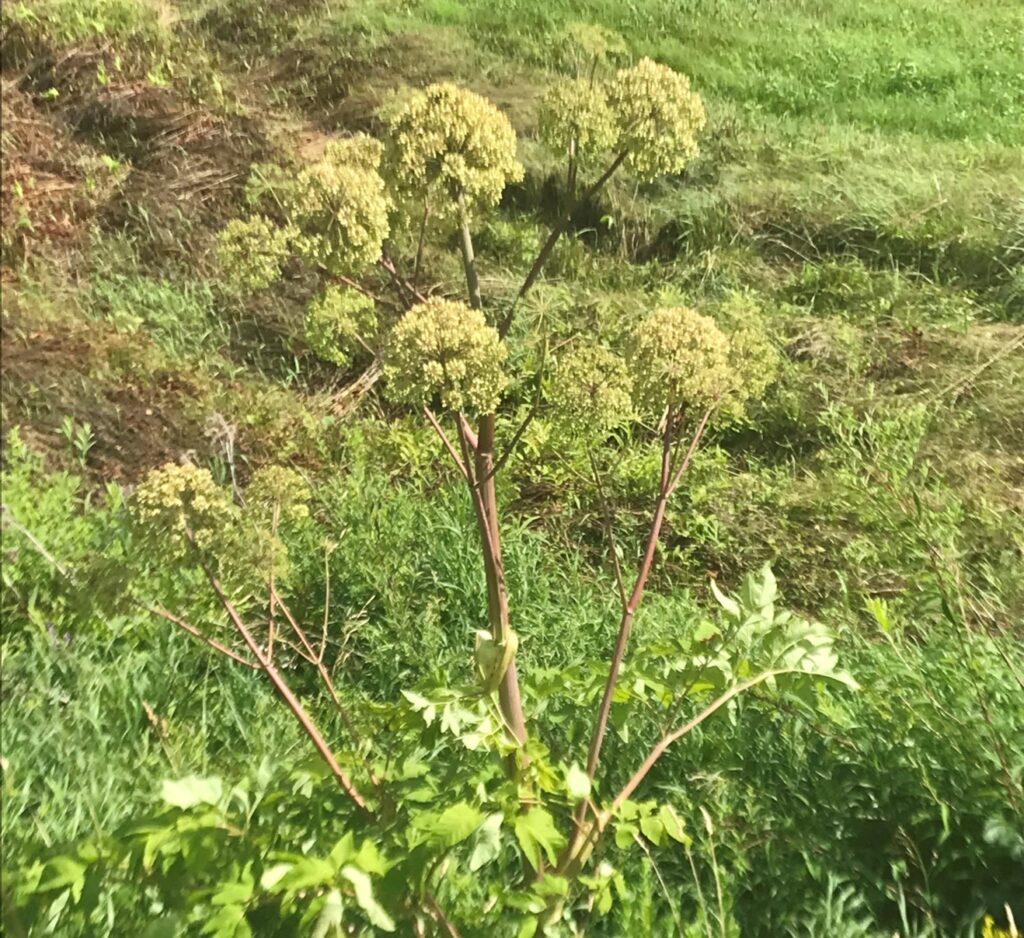Annual giant hogweed eradication campaign
Since the first report received in 2022, the Town of Sutton is in the process of completing its second annual campaign to eliminate giant hogweed plants found on its territory. Giant hogweed is an invasive and toxic exotic plant. It presents a health and environmental risk.

Plant characteristics
For humans, contact with hogweed sap, combined with exposure to light (natural or artificial ultraviolet rays), causes lesions on the skin. These lesions are similar to 1st- or 2nd-degree burns. When this plant grows in an environment, it spreads rapidly and harms the growth of other plants already growing there.



The plant can grow from 2 to 5 meters in height. The stem is covered with coarse white hairs and has numerous raspberry-red to purple spots. The leaves divide into smaller ones and are deeply indented and pointed. It is often confused with Angelica, a pretty, pleasant plant whose more uniformly purple stem is free of coarse hairs and well-defined red spots (see photo).
Eradication campaign
As it is a toxic plant that is dangerous to handle, the Town of Sutton, like many other municipalities in the region, has chosen to take care of plant removal to ensure that the job is done properly, on time and safely.
A specialist in the control of the species takes care of its elimination, taking the necessary precautions and following the rules of the trade. Manual removal is the recommended method for eliminating plants. You need to act quickly to get rid of the flowering plant, as each plant can produce up to 50,000 seeds, which remain dormant for several years before gradually re-emerging. Contamination then becomes exponential!
The plants reported in 2022 at the edge of route 139 have been eliminated. However, a colony along the railroad and plants growing next to a nearby stream were further removed in 2023 and will need to be followed up.
If you observe one or more giant hogweed plants, do not attempt to pull them out yourself! The use of pesticides is not recommended. Instead, contact the Town by sending a photo and the location to [email protected] or by calling 450-538-2290.
For more information, please visit: https://www.quebec.ca/en/homes-and-housing/healthy-living-environment/identifying-and-getting-rid-of-giant-hogweed.

